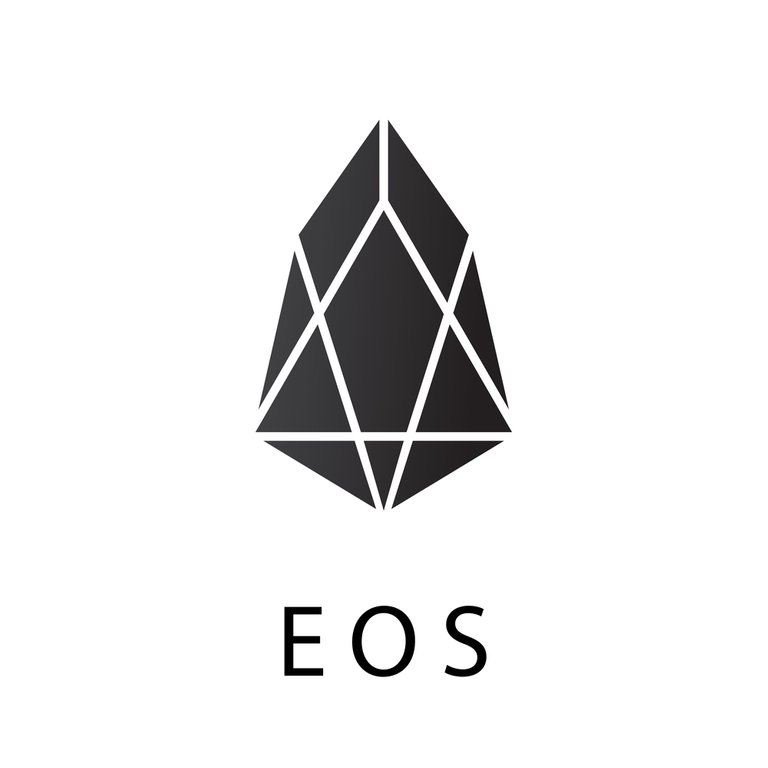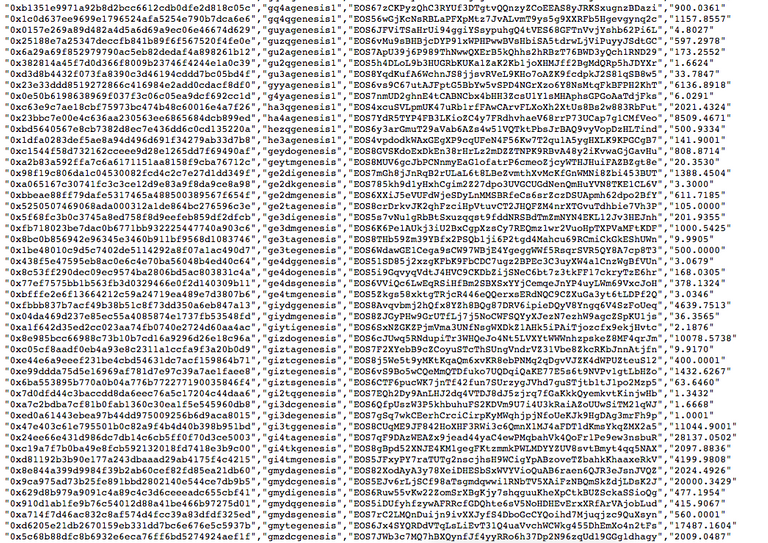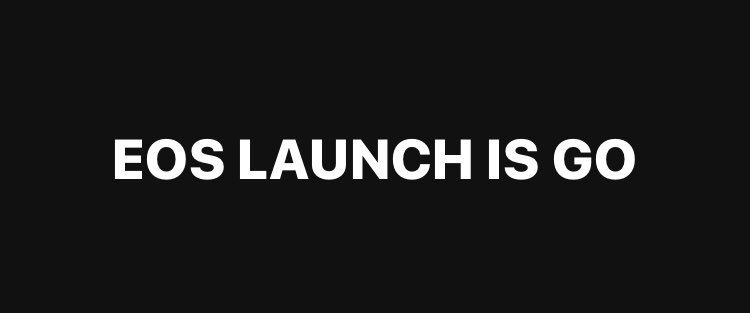
Introduction
With a market cap of a little over $12 Billion dollars and a fundraising campaign that has lasted one year and raised upwards of $4 Billion dollars; the 5th most valuable cryptocurrency is ready to launch. While EOS existed as an ERC20 token on the Ethereum blockchain for its fundraising efforts in 2017, the time for its mainnet launch has arrived.
Snapshot
On June 2nd at 22:59:59 UTC all EOS tokens on the Ethereum blockchain were frozen, a snapshot was taken of all registered addresses, and the tokens will be recreated 1:1 on the EOS network. The snapshot can be pictured here -
 Raw image of the CSV snapshot file taken by EOS New York
Raw image of the CSV snapshot file taken by EOS New York
Block.one (the team behind EOS) published their software as open-source meaning the community chooses how the EOS network will run. This was the extent of Block.one's efforts after the release of their code. It's EOS's community that takes over to dictate certain aspects of the launch. This social experiment will consist of community efforts, collaboration between Block Producers, and joint consensus.
Upon the software release, Block Producers from around the world (crypto-exchanges, crypto mining operations, consultancies and groups of developers) will launch chains and must come to an agreement with a certain net launched for it to be the "mainnet". Token snapshot must be agreed upon and mirrored, as well as the security of the blockchain for it to be adopted by the community.
Block Producers
The blockchain infrastructure will be made up of 21 Block Producers. 21 might seem like a very low number for such an ambitious project, but comparing to POW networks (Proof of Work: which are usually fully controlled by less than ten mining pools) this number is relatively high. Brendan Blumer, CEO of Block.one, explains their role in the EOS ecosystem.
"Block Producers are 21 elected delegates by the token holders that are actually confirming transactions on the network. I always look at those 21 Block Producers elected in EOS as the same as the mining pools that you have established in a lot of proof-of-work networks. What it really does is it distributes the control to the token holders and on a geographical basis, it uses just 21 nodes to process transactions."
Voting
The 21 Block Producers will be elected by the community through the staking of EOS tokens. The voting will conclude when 15% of the 1 billion EOS tokens (150 million) have voted.
Block.one has provided the community voting through 'cleos' a command line interface. This tool can be found as a part of the EOS installation package. There are, however, community developed portals for easier voting mechanics such as http://vote.liquideos.com/ - a portal created by Bancor's LiquidEOS, who is also a Block Producer candidate. (Bancor and BlockchainIL are sister companies)
A staked EOS token can vote for up to 30 various BP candidates.
Each token = 1 vote per BP (up to 30 BP's per token).
The 21 BP's who receive the most stake weighted votes will be elected as the ‘active’ block producers (150–175 estimated standby block producers).
Conclusion
The release of the EOS mainnet can be seen as a confusing series of events, but also as a fascinating community effort of decentralized organization and implementation. While it's too early to say exactly when and how EOS mainnet will be launched we certainly say this is an exciting moment in the world of blockchain.
Updates

- June 9, 2018 at 01:59 UTC - The EOS mainnet has been confirmed for launch at - June 9th, 13:00 UTC time , with a unanimous 'GO' vote amongst BP's.
- June 9, 2018 at 18:00 UTC - The BP's will release a statement about when it's safe to vote. Voting can begin only after chain is enabled. Please wait for the community announcement. You can follow the EOS Timeline tracker here - https://eosauthority.com/timeline
- June 10, 2018 - EOS mainnet has been successfully launched and BP voting has commenced. The safest and most recommended voting tool is Cleos (command line voting tool provided by Block.One)
Community voting portals can also be used as a more user-friendly interface (although this method is not endorsed by BP's).
- Article on using Cleos to vote: https://steemit.com/eosio/@chitty/eos-how-to-vote-for-bp-candidates-on-cleos
- Community voting portal provided by LiquidEOS: http://vote.liquideos.com/
- June 11, 2018 at 15:00 UTC - Voting is on-going with over 29 million votes cast (2.9196% of the total EOS supply). Voting will conclude once 15% of the total EOS supply has voted (150 million votes).

- June 13, 2018 at 15:00 UTC - Voting progress has passed 50% of the needed 15%. A remaining 65 million votes are needed for the chain to unlock. Current top 10 BP leaderboard is as follows: (votes)

- EOS New York (13,638,617)
- EOS Canada (12,813,592)
- EOS Gravity (11,858,512)
- EOSdac (11,829,970)
- eoscannonchn (11,501,488)
- EOS Authority (11,263,870)
- EOS Cafe (10,042,349)
- eosyskoreabp (9,868,998)
- EOS Beijing (8,908,015)
- LiquidEOS (8,817,913)
Congrats to the EOS community!June 14th, 2018 at 18:00 UTC - EOS Mainnet is live! 15% threshold has been passed and the chain is live! The top 21 BP's have started producing blocks. EOS block explorer - https://eospark.com/

Super concise & to the point! Good article there =)
EOS may possible change the world as we know it. ;)
Very well written!
It's articles like these that will ease the nerves of the EOS token holders!